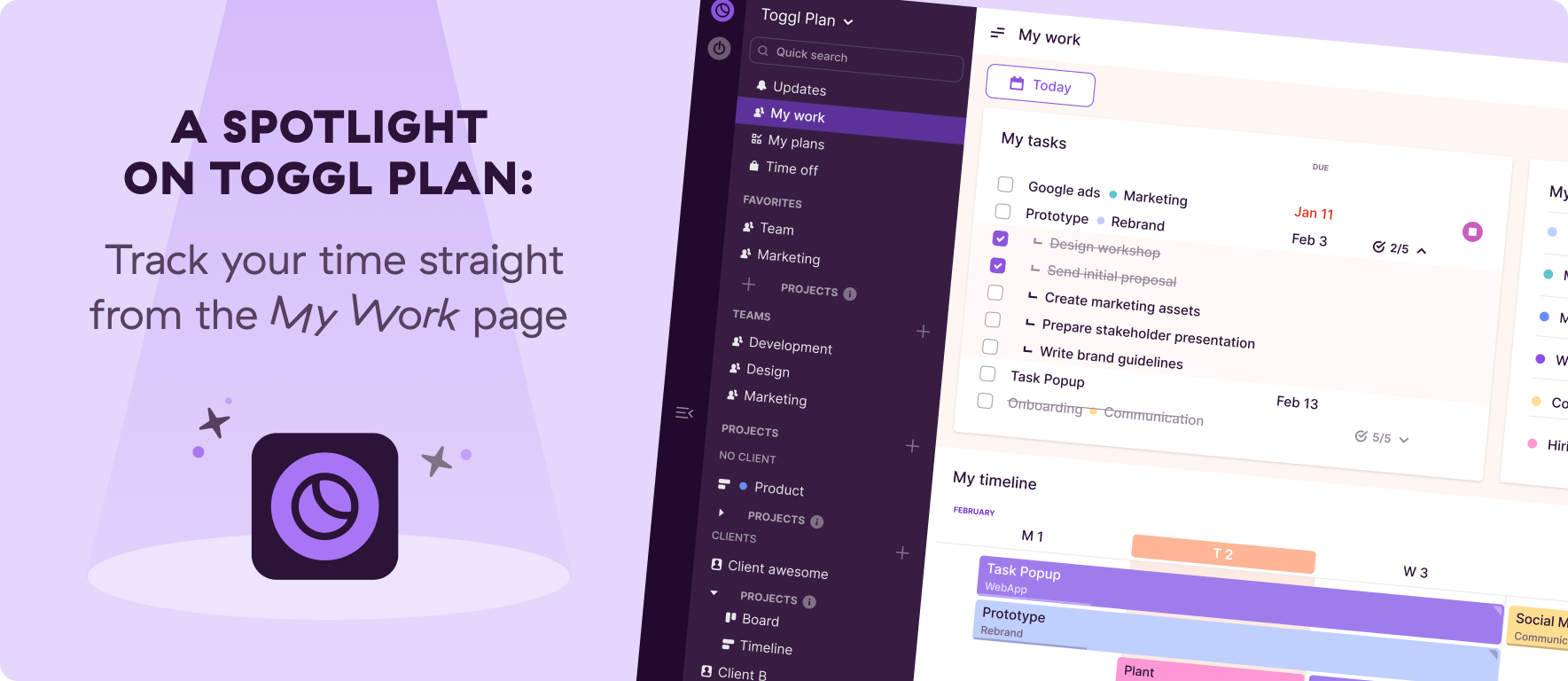Henry Ford is world-famous for his innovative methods, his impact on the car industry, and one more thing — popularizing the 40-hour workweek in the 1920s. That was 100 years ago, though! No wonder the 9-5 has fallen under serious scrutiny, with the global pandemic serving as a major catalyst for the calls for change.
Although the pandemic accelerated the shift towards remote work, the demand for flexible hours is more than just a trend — it’s a growing expectation among employees. What will the future of work look like when 77% of employees would rather take a flexible job than a pay rise?
Let’s explore what’s really going on and what this increasing interest in flexible work schedules means for employees and employers.
TL;DR — Key Takeaways
Flexible schedules enable employees to have more control over their working hours to balance work with other commitments.
It can be implemented in different ways, such as introducing ” core hours,” opting for a four-day work week, shift swapping, and remote work.
Flexible work schedules can benefit employers, too, leading to higher productivity, retention, and a competitive edge in the war for talent.
It’s key to remember that there is no one-size-fits-all solution. Different industries, businesses, and employees each have different needs, which should be reflected in the flex options on offer.
By investing in the right flexible work tools and management training, you can set your company up for flexy success!
What is a flex schedule?
A flex schedule gives employees the flexibility to choose their own working hours rather than conforming to the traditional 9 am to 5 pm office routine. In practice, there are a few variations of what this looks like.
Some companies require employees to be online during “core hours” each week, giving them the freedom to adjust their arrival and/or departure times as they see fit. While others throw out the idea of work hours entirely, focusing instead on the results produced. We do this at Toggl with our RAFT policy (but more on that later).
Flex schedules may differ from person to person and company to company. No matter which your business adopts, the idea behind them is the same — to empower workers to own their time and make the best decisions for their work-life balance.
Let’s take a look at two examples of the most common applications of flexible work.
Daily flexible schedules
Daily flexible schedules allow employees to choose their start and end times within certain limits set by the employee and employer while still fulfilling their required hours.
For instance, this might look like having the ability to begin anytime between 7 am and 10 am and logging off when the day’s work is done.
The advantage of this setup is that the employer still retains an employee’s 40-hour workweek while giving the employee the flexibility to accommodate personal and family responsibilities or leverage their own peak productivity times.
Compressed work week
Another version is opting for compressed workweeks in order to enjoy a three-day weekend. This setup allows employees to squeeze 40 hours of work across four days instead of five.
This could look like working Monday to Thursday instead of Monday to Friday.
Regularly experiencing three-day weekends can lead to better work-life balance, reduced commuting costs, and lower turnover rates for companies, all without sacrificing productivity.
In both examples, flexibility is offered while still maintaining a 40-hour workweek commitment.

How (and why) do flexible work schedules vary by industry?
The adoption and implementation of flexible work schedules can differ significantly across different industries. This is mainly due to the varying nature of the work, client demands, and operational needs.
There are different types of flexibility that suit different sectors. For example, in the service sector, employees can swap shifts to accommodate personal needs. Enabling business needs to be met while permitting workers a degree of flexibility. Alternatively, success in the tech sector is often determined by output and outcomes rather than hours worked, provided that project deadlines are met.
This is the kind of culture we’ve adopted at Toggl. We call it RAFT — Results and Accountability First at Toggl. The way we see it, a 9-5 day doesn’t make sense nor prove you’re working harder than anybody else — especially when your globally distributed team is spread out across five different continents!

Here are some more examples of how flexibility can look across different industries:
Technical jobs: Roles that require deep focus, like programming or graphic design, might offer flexible hours to accommodate peak productivity times.
Media and communication: Jobs such as writing and PR often allow for remote work and unconventional hours, focusing on content creation and meeting publication deadlines.
Trades: Trade jobs, which usually require on-site presence with clients rather than office work, can still offer some flexibility around project phases or emergency call-outs.
Healthcare: With the emergence of telehealth roles, healthcare professionals are experiencing increasing flexibility in their workdays.
Regardless of the industry, successful flexible work schedules often depend on clear communication, adaptability, and coordination among team members to ensure business objectives are met.
What are the benefits of a flexible workplace?
It’s clear to see that the shift towards flexible work arrangements isn’t just a temporary adjustment but a fundamental change in how modern workplaces operate.
Given the evolving demands of work across time zones and the opportunities brought by technological advancements, flexible work schedules offer significant benefits for both employers and employees.
Benefits of offering flexible schedules for employers
Increased productivity
One of the biggest blockers to the adoption of more flexible work schedules is managers who fear their workforce productivity will take a hit. Yet, studies show this couldn’t be further from the truth.
A recent study found remote workers work almost 17 days more per year than their in-office counterparts!
Plus, flexible workers’ time is more valuable — they are prone to fewer distractions than office-dwellers, enabling them to stay in the flow much easier. So not only are they working more, they’re also more productive while doing so.
Attract top talent
Forbes lists a flexible schedule as the most highly-desired fringe benefit of 2024. It’s no shocker, then, that top talent will be passing on employers that cannot offer a flexible agreement.
With 12.7% of full-time employees working from home and 16% of employees across all companies being fully remote, chances are that they’ll find the flexibility they’re looking for elsewhere.
Offering a flexible schedule is also a great way to retain the great talent you already have. It can go a long way to making high-performing employees feel empowered and engaged, leading to more retention and less turnover over time.
Benefits of offering flexible schedules for employees
Greater work-life balance
A flexible schedule allows employees to vary their work day and better manage their personal and professional responsibilities. This reduces the risk of burnout, keeps engagement high, and ultimately fosters a healthier work-life balance.
Having control over your own schedule has knock-on positive effects on mental and physical health, which is fertile soil for productivity. Helping employees achieve a better work-life balance rather than build their lives around immovable work schedules.
Improved job satisfaction
In the same vein, having control over your own working hours can lead to higher job satisfaction, as employees feel respected and valued for their contributions beyond just clocking hours.
Autonomy, trust, and empowerment go a long way toward inspiring employees to step up in their roles, take greater ownership, and ultimately deliver better results. This can also enhance an employee’s long-term view and commitment to their role and their future growth within the company.

Tips for implementing a flexible work schedule
Before diving head-first into a 180-degree transition, it’s important to evaluate what kind of flexible benefits make sense for your workplace. Not every business or industry will have the same needs, so how employees work will look different on a case-by-case basis.
There’s no one-size-fits-all approach to creating a flexible work environment. However, the tips below should be a useful starting point.
1. Assess your team’s needs
Go straight to the source — ask your employees!
Start with surveys or meetings to understand employee preferences and needs regarding flexible work. Emphasize the importance of recognizing the diversity in employees’ personal lives and work styles, which can inform the design of a flexible work schedule that accommodates various employee needs.
2. Set clear guidelines
With something so versatile, it can be tempting to take a fluid approach. However, getting too flexible with your flex working strategy can be counter-productive and messy. Instead, set clear guidelines from the beginning — outlining the parameters of the flexible work schedule, including core hours, maximum/minimum work hours, and communication expectations.
For example, see how we outlined our RAFT policy at Toggl. We carefully outlined what we are doing as well as why we are doing it, and have found it to be very helpful for new joiners assimilating into our work culture, but also as a reminder of our values.
Another great example of implementing a flexible work schedule comes from comundo, who trialed and then kept a 4-day work week for their whole team. They cut working hours from 40 in five days to 32 in four days without changing compensation.
How? By implementing the Pomodoro technique. They schedule 12 of these focused sessions each week, synchronized across all teams, where neither Slack, email, or meetings are allowed. After just three months, 82% of the team reported improved mental health.
Regardless of the kind of flexible practices you adopt, it is crucial to be transparent so the benefit is consistently applied across the company.
3. Invest in the right tools
Building the right tech stack is vital for successful remote workers. When you can’t tap a colleague on the shoulder to ask a question, things like project management software and communication platforms become immensely valuable.
Providing workers with proper training on how to use these tools effectively is crucial to maintaining a productive team.
Toggl offers more than Hire! Toggl Plan is a simple, visual way for agencies and internal teams to balance team capacity and project workloads. Use it to visualize and optimize your team’s capacity while ensuring everybody is aligned and informed.

4. Promote open communication
Scheduling regular check-ins or 1:1s with key team members to discuss projects, tasks, and any challenges arising from flexible work schedules is always a good idea.
Keeping feedback loops running between employees and management is also a great way to continually optimize the flexible work environment with crowdsourced suggestions for improvement.
5. Focus on output, not hours
If your industry allows it, consider shifting your focus from the number of hours worked to the output and quality of work produced. This involves setting clear objectives and performance metrics to be met within the quarter or predefined pay period.
This shift also requires building trust between employers and employees, allowing for autonomy while ensuring accountability. This is the reason RAFT has been working so well at Toggl — we really embody these values, and they touch every part of what we do and how we do it.
6. Train managers
Despite its popularity, the concept of flexible work is still relatively new — so it’s normal for there to be a learning curve involved. Rather than shy away from the change, embrace the chance to train your managers on how to lead a flexible workforce effectively.
This includes managing remote teams, fostering inclusion, and addressing any biases against non-traditional work schedules. Remote-how is a great resource designed to help with exactly this kind of transition.
If you struggle to fill leadership roles with strong managers who know how to lead remote teams, consider hiring using skills tests to vet candidate skills straight from the start.

7. Hire responsible employees
The policies and guidelines discussed earlier are important; there’s no doubt about that. But policies alone are not going to create a great flexible work culture. The other piece of the puzzle is ensuring everybody has the necessary skills and competencies to manage their work effectively when autonomous in their new job.
Time management and leadership are great characteristics to start selecting for in the hiring process, and will go a long way to building a resilient, autonomous, and flexible workplace with a killer team.
A super simple way to get started with this is skills testing with an assessment tool like Toggl Hire that can assess for soft skills like these from the outset.
8. Review and adjust
If you can’t measure it, you can’t improve it.
Think about setting up regular review sessions where you collect data from the team on the effectiveness of the flexible work schedule. Based on the data, you can then make the adjustments to help each employee to balance work schedules as necessary.
Some important success metrics to consider are the impact of flexible schedules on productivity, employee satisfaction, retention, and mental and physical well-being.
Hire candidates with the ability to work flexible hours
Finding the right kind of candidates who can thrive in flexible work environments is key to making those environments successful. By focusing on candidates with high self-discipline, time management, and effective communication skills, you’ll be well on your way to a more flexible and balanced workplace.
Skills testing tools can help assess these abilities from early in the hiring process so you can shortlist the relevant candidates instantly and only interview the best of the bunch.
Ensure your team’s success and create a flexible work environment. Try our skills testing software for free today and find your ideal candidate.

Julia is a freelance writer and fierce remote work advocate. While traveling full-time, she writes about the intersection of technology and productivity, the future of work, and more. Outside work, you can find her hiking, dancing, or reading in a coffee shop.






